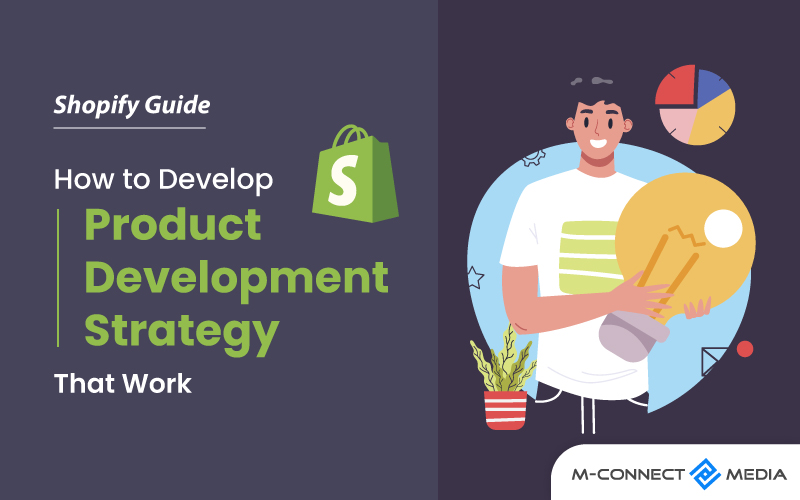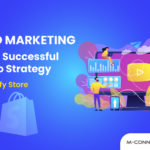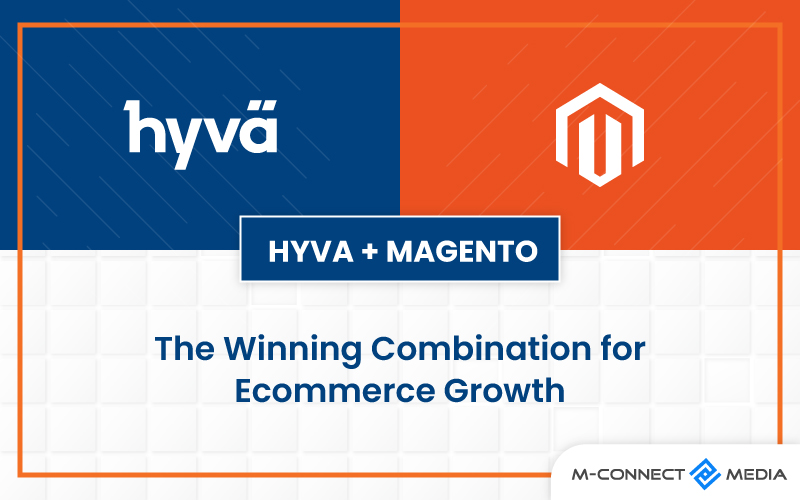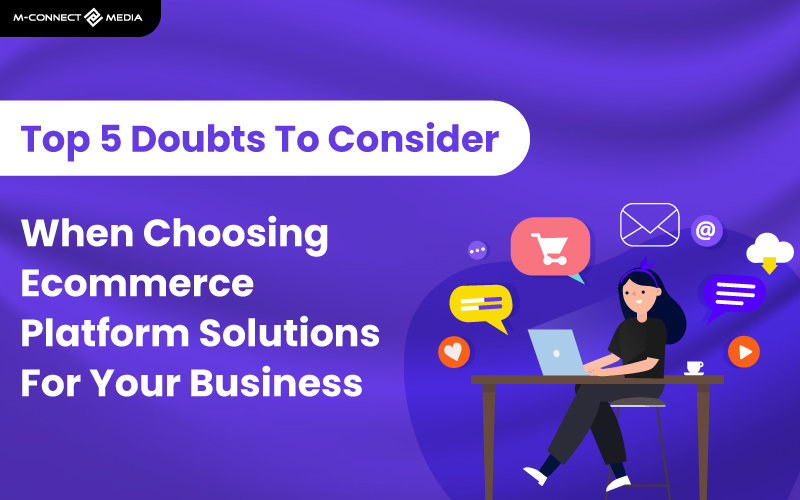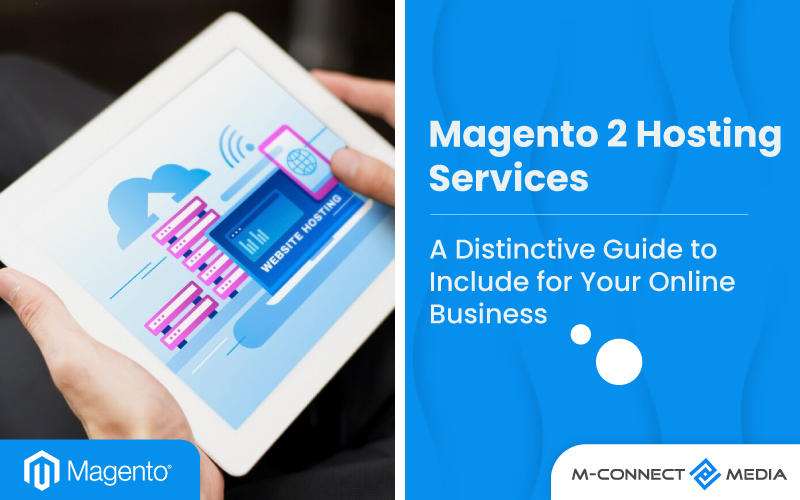The Product Development Strategy has a magical aspect for most seasoned business owners and prospective entrepreneurs. Shopify Guide to Creating a Successful Product Development Strategy is to support you along the way and assure your success!
Every item for sale goes through a lengthy process to get there. Whether it’s a car, a facial moisturizer, or a piece of software, the item is the outcome of a product development cycle. It includes concept generation, market research, planning, and other activities.
Every item for sale goes through a lengthy process to get there. Whether it’s a car, a facial moisturizer, or a piece of software, the item is the outcome of a product development cycle, which includes concept generation, market research, planning, and other activities.
The Shopify Guide to Creating a Successful Product Development Strategy is here to support you along the way and assure your success! Here’s how a good product development approach may transform a new idea into a long-lasting commercial offering.
What is A Product Development Strategy?
A Product Development Strategy is a business practice that organizations use while creating and refining goods. An effective product development strategy helps a corporation to produce new product concepts or modify existing items that people desire to buy.
Proactive and reactive product development methodologies can coexist. Proactive strategies seek to expand a company, sometimes by bringing products to new markets. Reactive product development methods seek to maintain market share and compete in a company’s existing market.
In other words, a product development strategy is also the lifeblood of an organization’s innovation engine. It is the driving force behind progress, the foundation for success, and the key to unlocking the boundless possibilities of the future.
Also Read: 13 Best Shopify Marketing Strategies to Boost Sales Growth in 2023
Product Development Strategies – Shopify’s Guide
Here are Five Product Development Strategies for any size or sector of online businesses:
1. Market Growth
A market Expansion strategy is increasing the target audience for an existing product by establishing a presence in or providing delivery to numerous markets. To thrive, a company’s marketing approach may need tweaking, its web presence expanded, or additional retail locations opened.
One example of market growth is the coffee brand Dunkin’ Donuts, which expanded outside its initial New England center to open locations across the United States.
2. Product Enhancement
A Product Improvement strategy involves making beneficial improvements to a current product or product line, such as changing the product design in response to consumer input or technical advancements. A product development team can gather input from the public by holding focus groups or examining web reviews and social media profiles.
This technique extends the development journey of a product, keeping it relevant for a longer period of time, which can lead to higher earnings and cover development costs.
3. Innovative Disruption
Strategies for New Product Creation have the ability to shake up businesses that are stagnant or have space for improvement. As new technology disrupts established business models, such as Uber and Lyft in the taxi industry, Airbnb and Vrbo in hospitality, and Netflix and Hulu in television, the technology sector has become associated with disruptive innovation.
The disruption also entails avoiding third-party intermediaries and selling items directly to consumers, which reduces costs and increases efficiency.
4. Product Extension
Product Extension is a commercial approach in which a well-known brand name is used as part of the name of a new product. For example, when Ford made its first big effort into electric cars, it dubbed a key product the Mustang Mach-E to capitalize on the Mustang brand’s popularity.
Although the original Mustang was a gas-powered sports vehicle and the Mach-E is a battery-powered SUV, market testing encouraged Ford to embrace product extension.
5. Diversification
Product diversity keeps a company from becoming unduly reliant on a single product or niche. Companies can diversify by introducing new product lines, establishing supplementary businesses, or acquiring other firms. Brooklinen, an internet bedding firm, entered the pillow industry through its subsidiary brand Marlow.
Also Read: How You Can Boost Decision-making Power with Shopify Marketing Insights
How to Develop a Product Development Strategy
There are six phases that comprise a comprehensive Product Development Strategy as follows.
1. Product Development
Product ideation entails brainstorming new product concepts. If you’re just starting out and trying to develop a new product from scratch, you can consider market gaps. What client pain issues aren’t being addressed by present products? If you already have a business, consider what products or services your present customers might welcome in addition to your current offers.
2. Testing and Prototyping
You’re ready to construct a prototype if you’re convinced your product will appeal to a customer base. Most prototypes are expensive in terms of time or money, but they require testing and developing your product before committing to its launch. A physical prototype can build by hand, using a 3D printer, or outsourced to a specialist. Moreover, Product testing is gathering input from users on the prototype and using it to enhance the product.
3. Product Validation
Following that, you must verify your product concept, or evaluate whether your product has a large enough market to support the potentially costly development procedure. To gain a better idea of possible demand for the product, undertake market research, focus groups, research similar items, or begin a crowdfunding campaign to determine whether there are many people willing to back your product.
4. Production and Release
A product development procedure is required to generate the item at scale. You may require dependable ties with manufacturers who can convert raw resources into completed goods. If you want to choose from items that have already been manufactured, you may work with a private-label manufacturer. In this situation, you would simply imprint a brand name on an already existing product. When you’ve decided how to create the products, you’re ready to sell them on your eCommerce website.
5. Product Marketing
The purpose of Marketing a product is to educate the general audience on why it is appropriate for them. To do this, you need to develop and provide value propositions for the product. For example, the product may be the highest quality or most economical alternative on the market. Providing package also offers that combine your new product with your more established goods, or providing a discount on the new product, are other ways to market your product.
6. Analyses of Products
After you’ve released your product, you’ll need to watch sales to see how you can improve for existing and prospective consumers. When you sell on an eCommerce website development platform like Shopify, you can get sales reports and analytics that provide up-to-date information such as net sales, sales breakdown, net sales by channel, net units sold by traffic source, and customer profiles. Moreover, This data may use to continuously enhance the product.
Also Read: 10 Best Shopify Development Trends To Consider in 2023
Final Thoughts
Developing a successful product development strategy is a challenging process that needs Meticulous Planning, Testing, and Execution. With the right plan and mentality, any firm can create cutting-edge products that win over customers’ hearts and minds.
A product development plan includes upgrading current items to meet changing customer expectations and market trends. In product development, a journey of a thousand miles begins with a single step. However, A successful product is meticulously built performing a series of steps that begin with an idea.
By following the six phases outlined in this article, from ideation through product analytics. You can build a product development strategy that guarantees you’re developing solutions that not only meet the needs of your consumers but also help your business grow.
In today’s rapidly changing business environment, it’s critical to stay ahead of the curve by continually creating and improving products. Remember that an effective product development strategy comprises more than simply building stuff; it developing solutions that make people’s lives better.

